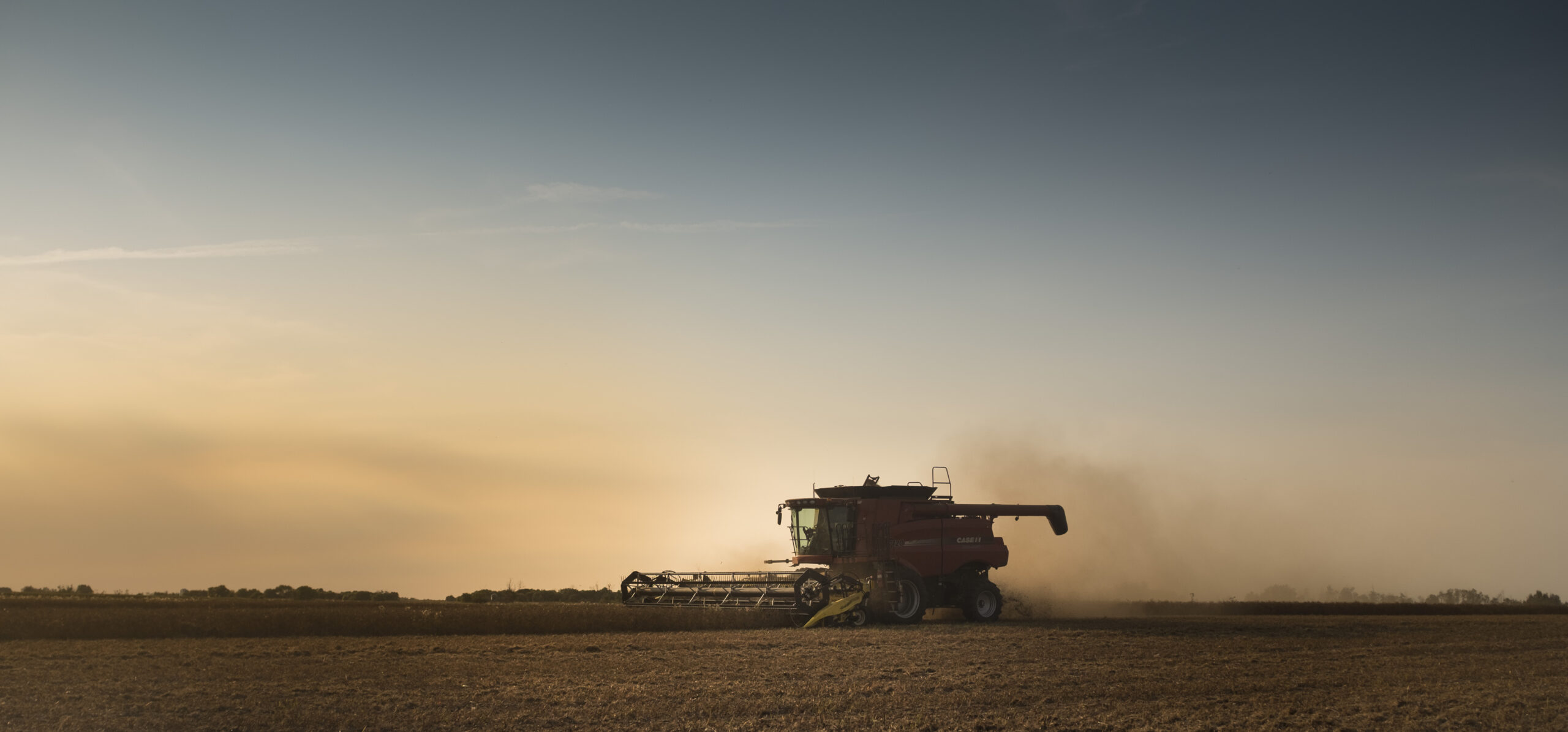Chickpeas are considered ready to harvest when most of the plants are yellow, and most pods are mature. At this stage, the top of the plant may still be green.
Swathing
Chickpeas can be swathed as early as 30% seed moisture but are usually left until most pods and straw are yellow. Swathing too early, while the pods are still green, can lead to an increase in green seed and loss of grade. Chickpeas may be swathed ahead of the combine if straight-cutting equipment is not available. Swathing the crop when plants are slightly damp may aid in the formation of an intact swath, less susceptible to wind movement. The dampness may also reduce pod loss while swathing. Swathing is an option to put an end to late-season growth if moisture is still readily available to the plant.
Chemicals For Harvest Management & Desiccation
Glyphosate can be applied for pre-harvest weed control when seed grain moisture is less than 30%. At this stage, chickpea stems are green to brown in colour, pods are mature (yellow to brown in colour) and 80 to 90% leaf drop (original leaves) has occurred. The main advantage of using pre-harvest glyphosate is for perennial weed control. Do not apply glyphosate products to any crops that will be harvested for seed.
Diquat is registered desiccant for crop drydown in chickpeas. It will not speed maturity of green crops. It should be applied when plants have yellowed, the pods have matured, and seeds have changed colour and detached themselves from the pods (pod rattle stage). This is a very mature stage of the crop, so the reduction in days to threshing following a diquat application compared to lentils or peas is less. Additional products that can be used as a harvest aid before crop harvest in chickpeas include carfentrazone, saflufenacil, and flumioxazin containing products. As well, with the later maturity of chickpeas, cooler conditions and shorter days later in the growing season will reduce the speed of drydown, compared to applications made earlier in the growing season. However, applications of harvest aid products can results in dry down of green weed material and results in a quicker time to harvest than if no harvest aid products were applied.
Research has shown that direct cutting without desiccation (natural maturity) results in the highest yields and largest seed size. Desiccation with diquat or application of pre-harvest glyphosate applied before pod rattle stage when 80% of pods were tan coloured, preserved yield. However, these treatments did not speed up the time to maturity and seed size was reduced. Although desiccation is not as common on chickpeas compared to peas and lentils, it can still be a valuable tool in some situations.
Combining
Often times, chickpea acres are straight-cut without the aid of a desiccant. Chickpeas have stiff stems and a relatively upright growth habit, with pods developing several inches above the ground. Pods are quite shatter resistant (although under drought conditions in 2001, some chickpea growers reported shattering of maturing pods). Pods and seeds often mature before the stems and leaves. These characteristics result in chickpea plants being well-suited to straight cutting. However, if the plants are left standing too long following maturity there is a risk of pod drop and reduced quality with adverse weather.
Threshing can start when the seed reaches about 18% moisture. Avoid combining chickpeas that are wet or immature. When straight cutting, air or pick-up reels should reduce harvest loss compared to bat reels. Initial combine settings should be like those used for peas, however, a wider concave setting for larger seeds and an increased cylinder or rotor speed may be required to remove the seed from the pod. Care must be taken not to damage the seed, especially with the large Kabuli types. The use of stripper headers was found to reduce weed seed dockage and shriveled chickpea seeds as opposed to samples from straight-cut or pick-up headers. Stripper headers in chickpeas can strip off ripened pods and leave green leaves on the plants. Very little green material goes into the combine.
Chickpea seed colour is an important grading factor. The stage of the crop should be closely monitored, as harvesting too early increases the chance of green seed in the crop, which lowers the grade and value of the grain. Deductions are implemented if immature green seeds comprise more than 0.5% of Kabuli and 1% of Desi chickpeas. Early frost, as little as 2°C or 3°C, during pod filling and ripening can result in immature green seed in the harvested crop, significantly reducing the grade and value. Other factors that negatively affect seed quality are Ascochyta, Botrytis, or Sclerotinia in the seed, admixtures, earth tag, small seed size, weathering, splits/chips, and a lack of seed uniformity.




